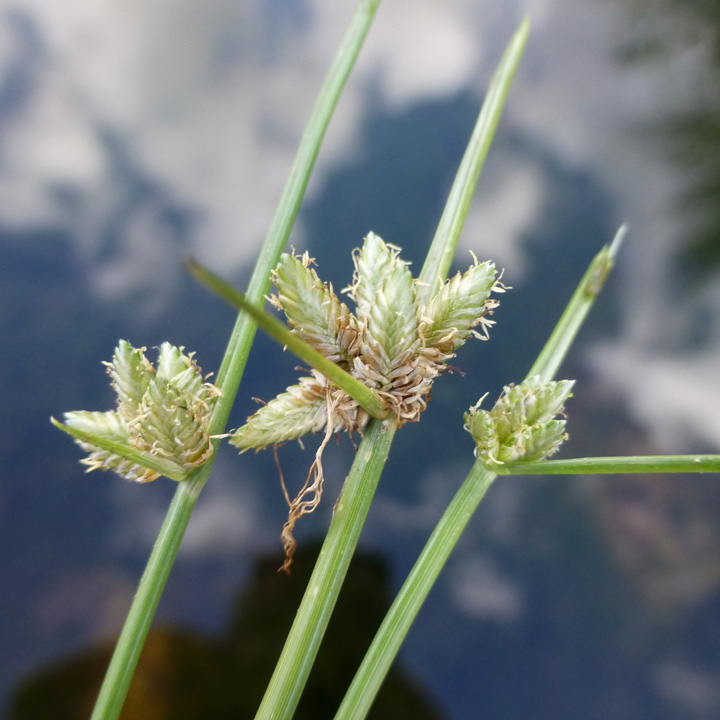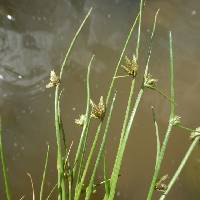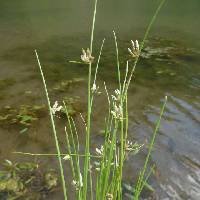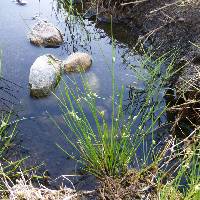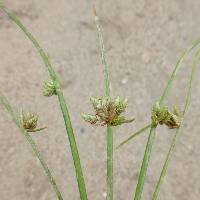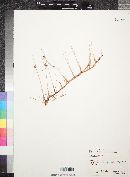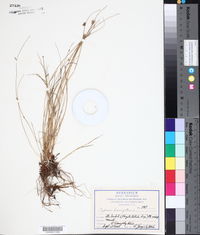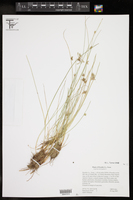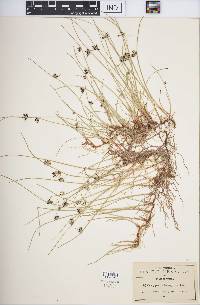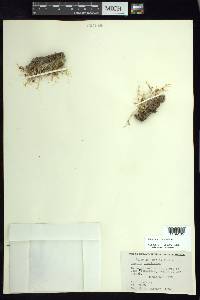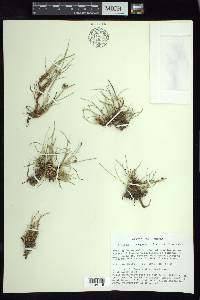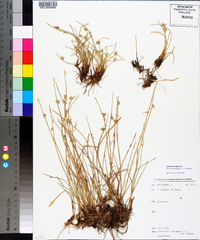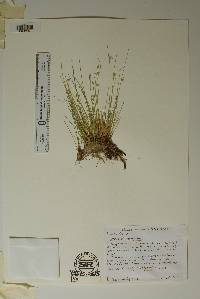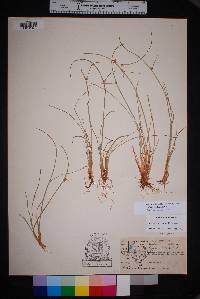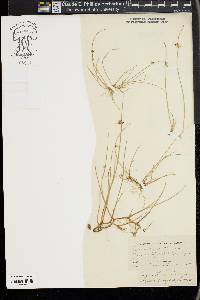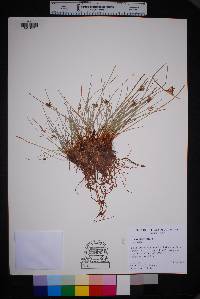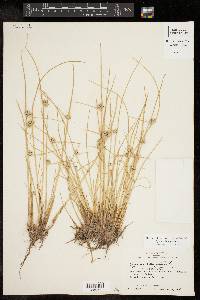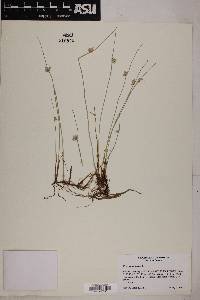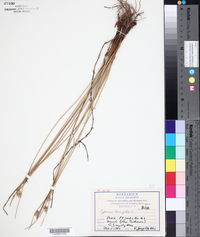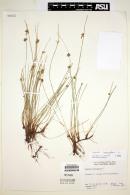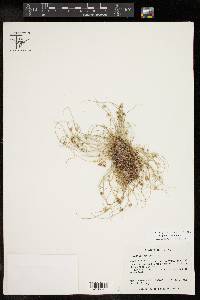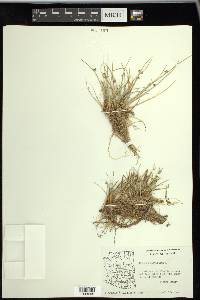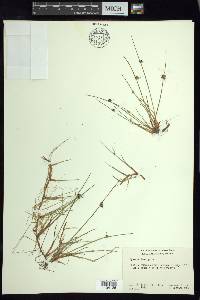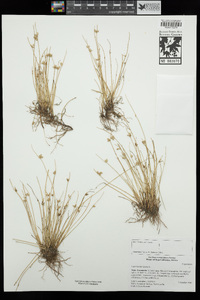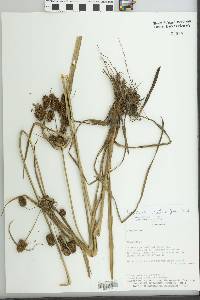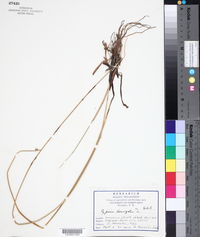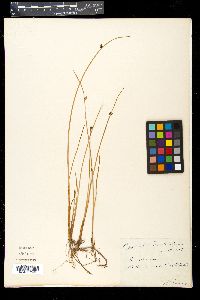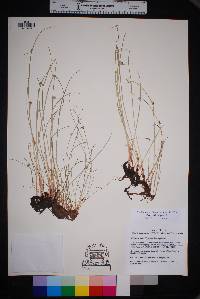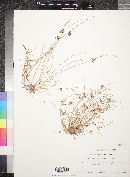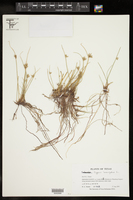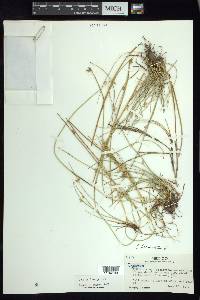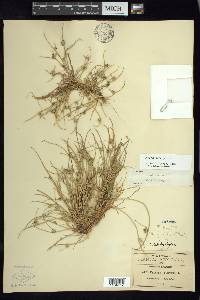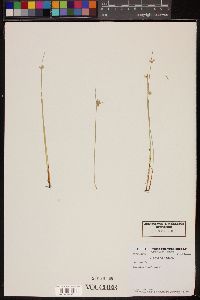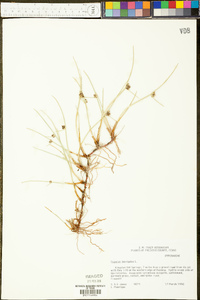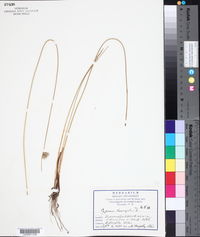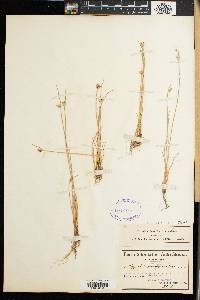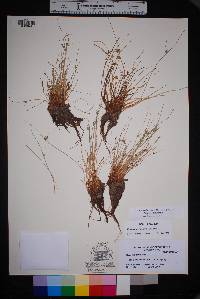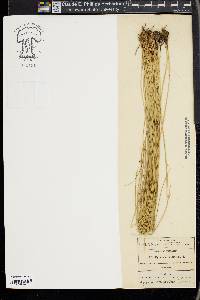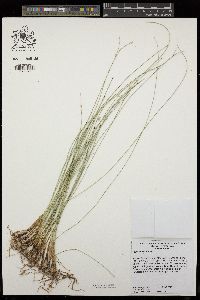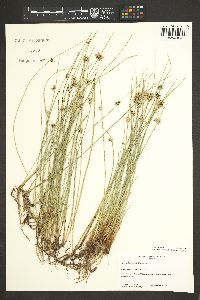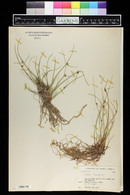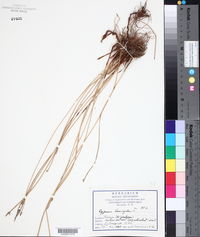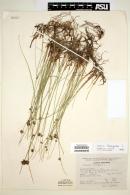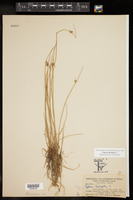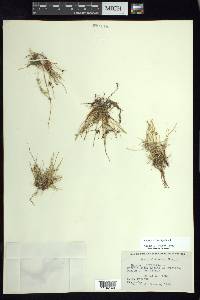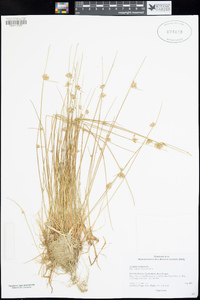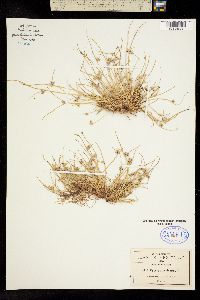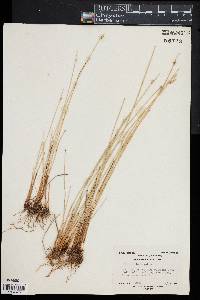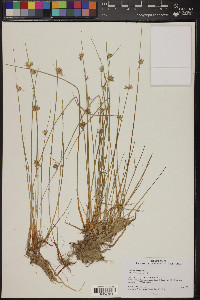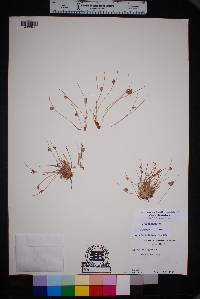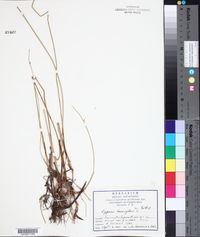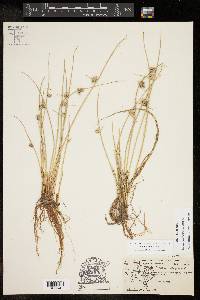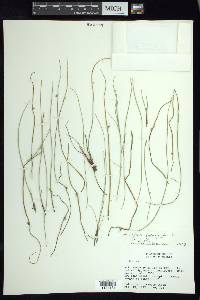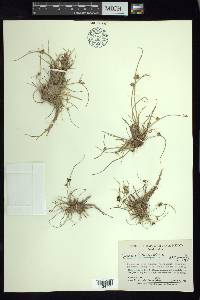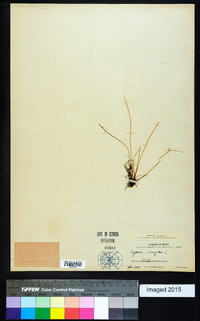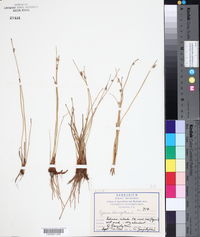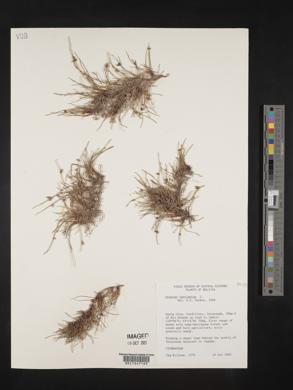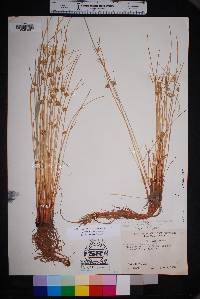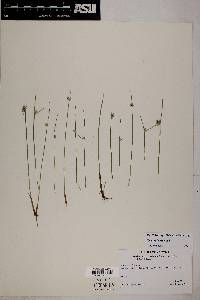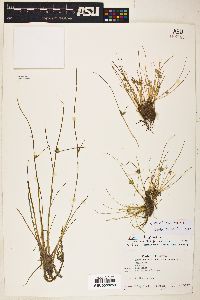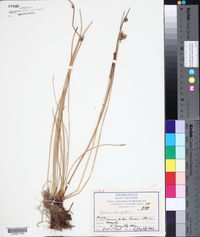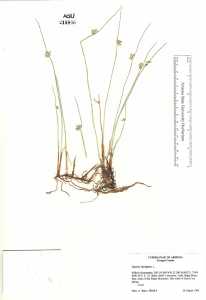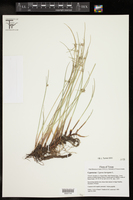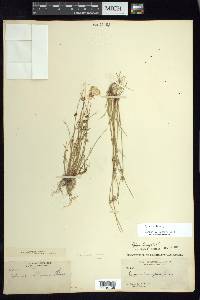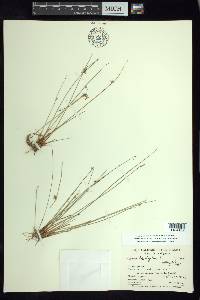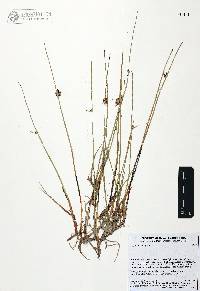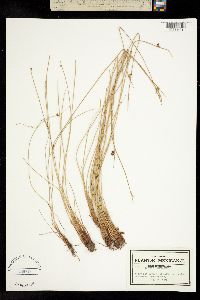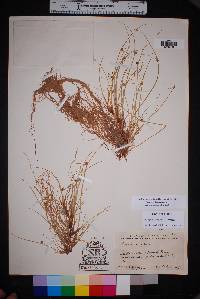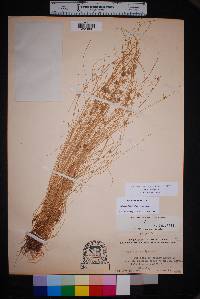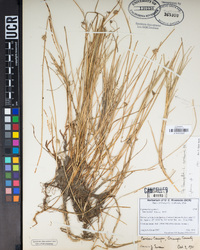
|
|
|
|
Family: Cyperaceae
Maui Flat Sedge, more...Smooth Flat Sedge, smooth flatsedge, smooth nutgrass
[Acorellus laevigatus (L.) Palla, moreCyperus careyi Britt., Cyperus kunthianus H.Mann, Cyperus neokunthianus Kükenth., Cyperus teretifolius A. Rich., Mariscus kunthianus Gaudich.] |
Herbs, perennial, rhizomatous. Culms single or close together, trigonous to ± terete, (1-)8-30(-60) cm × (0.3-)0.6-1.5(-2.2) mm, glabrous. Leaves: blades present or reduced to sheaths, base of culm covered with reddish sheath 5-25 mm, distally short toothed 1-2 mm, or leaf blades involute, 1-7 cm × 0.3-1(-1.6) mm. Inflorescences: heads appearing lateral, spikes ± digitate, 5-15 × 5-15 mm; rays absent, sometimes 1, to 2 mm; bracts (1-)2(-3), longer bracts erect, appearing as continuation of culm, shorter bract(s) horizontal or ascending, longer bracts (1-)2-8(-12) cm × 0.5-3 mm, shorter (0.3-)1-4.5 cm × 0.2-1 mm. Spikelets (1-)2-7(-14), whitish green to reddish, compressed-turgid, ellipsoid to oblong-lanceoloid, 4-7(-12) × (1.6-)2-3(-3.6) mm; floral scales (8-)12-22, off-white, whitish with red speckles, or with single red spot 0.5 mm wide, medially whitish, oblong-laterally ribless or weakly 2-ribbed, medially weakly 1-3-ribbed, obovate to orbiculate, 1.5-2 × (1.3-)1.6-2 mm. Flowers: anthers (0.5-)0.7-1 mm, connective apex reddish, 0.1-0.2 mm; styles 0.8-1.2 mm; stigmas 0.7-1 mm. Achenes gray, glossy, oblong-ellipsoid to ovoid, (1.2-)1.3-1.5(-1.8) × (0.7-)0.8-1(-1.2) mm, base cuneate to stipelike, apex apiculate, surfaces finely reticulate to papillate. Fruiting summer. Alkaline grasslands, hotsprings, ditches, brackish marshes; 0-1000 m; Ariz., Calif., N.C., Tex.; Mexico; West Indies; South America; Europe; Asia; Africa. Cyperus laevigatus is one of only two species of subg. Juncellus in the New World. It can be distinguished from all other New World species of Cyperus by its two stigmas and disclike, strongly flattened achene, which is borne with its face toward the rachilla. Species of subg. Pycreus, especially C. niger, have been misidentified as C. laevigatus, probably because of the dark, shiny spikelets. All species of subg. Pycreus have biconvex achenes like C. laevigatus; in species of subg. Pycreus the achene is attached with an edge toward the rachilla; in C. laevigatus the achene faces the rachilla.
FNA 2002 Common Name: smooth flatsedge Duration: Perennial Nativity: Native Lifeform: Graminoid General: Rhizomatous perennial with three sided to terete stems growing singly or clumped, 8-30 cm tall, 0.5-1.5 mm wide, glabrous. Vegetative: Leaves present or reduced to sheaths with base of stem covered in reddish sheaths 5-25 mm, blades involute 1-7 cm long, 0.3-1 mm wide. Inflorescence: Heads appearing lateral with spikes digitate, 5-15 mm long by 5-15 mm wide, bracts 2, longer erect, looking like a continuation of the stem, shorter bract horizontal or ascending, longer bracts 2-8 mm long by 0.5-3 mm wide, rays absent or 1-2 mm, spikelets 2-7, whitish green to reddish, compressed-turgid, ellipsoid to oblong-lanceoloid, 4-7 mm long by 2-3 mm wide, floral scales 12-22, off white with reddish speckles; achenes flattened gray, glossy, oblong-ellipsoid to ovoid, about 1.5 mm by 1 mm, cuneate to stalked base, apiculate apex with finely reticulate surfaces. Ecology: Found in alkaline or brackish marshes from 500-4,000 ft (152-1219 m); flowers July-October. Notes: Distinguished by the presence of the two stigmas and the disklike, strongly flattened achene, which is borne with its face toward the rachilla. Also characteristic is the many short leaves that can equal the stem. Ethnobotany: Unknown Etymology: Cyperus is from the Greek word meaning sedge, while laevigatus means smooth, slippery or shining. Synonyms: Cyperus careyi, Cyperus neokunthianus Editor: SBuckley, 2010 |
This project was made possible in part by the Institute of Museum and Library Services [MG-70-19-0057-19].
Powered by Symbiota

